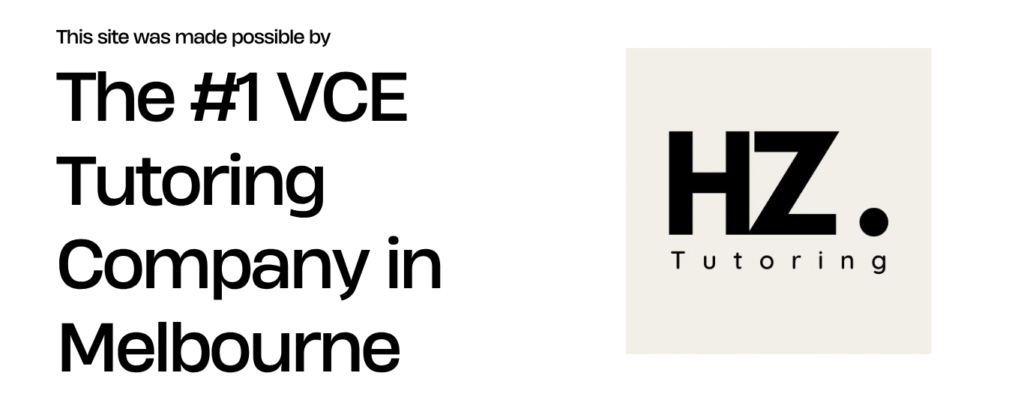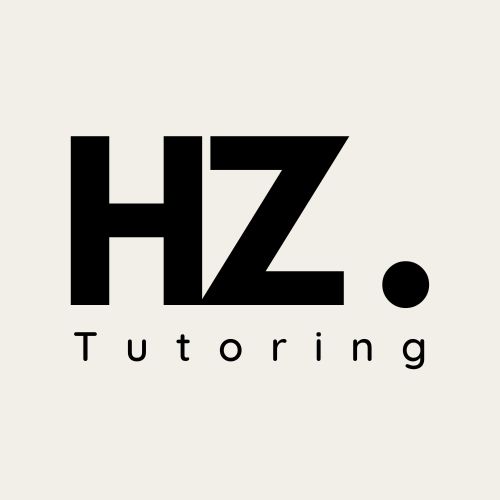Your cart is currently empty!
VCE English 3/4 Section B
Deconstructing The Core Task
Your response is built on three essential pillars provided in the exam. Understanding how to integrate them is the first step to success. A high-scoring response must synthesise these components into a unified whole.
Pillar 1: Framework of Ideas
This is your conceptual playground. You must ground your response in one of four broad ideas (e.g., ‘Writing about protest’). It’s not a research topic, but a lens to explore complex human experiences and test your conceptual flexibility.
Pillar 2: The Title
You will be given a specific title that you *must* use. This is not an afterthought; it is a central, organising principle that your entire piece must explore and reflect from beginning to end.
Pillar 3: The Stimulus
The prompt includes three stimuli (e.g., a quote, an image). You must draw ideas from at least one. Choose strategically and weave its concepts meaningfully into the fabric of your writing.
Framework Explorer
The four frameworks are your starting point for creative exploration. Select a framework below to unpack its core concepts, associated themes, and potential text forms.
The Author’s Blueprint
Before you write a word, you must think like an author. Make three foundational decisions that will guide your entire piece. These choices demonstrate conscious control over your craft.
Define Your Purpose
What do you want your text to achieve? Your purpose—to reflect, persuade, express, or argue—is your primary authorial choice and dictates every other decision about language and tone.
Choose Your Form
A short story, a speech, a memoir? Your choice of form is a strategic move to best serve your purpose. Adhering to the conventions of your chosen form shows mastery.
Cultivate Your Voice
Voice is the unique personality of your narrator, crafted through consistent tone, diction (word choice), and syntax (sentence structure). A distinctive voice makes your writing authentic.
The Writer’s Toolkit
This section provides practical techniques to elevate your writing from competent to exceptional. Master these tools to create sophisticated and impactful prose.
The Golden Rule: ‘Showing, Not Telling’
Telling states an emotion. Showing uses sensory details and actions to let the reader infer it. This is the key to immersive writing.
“He was angry.”
Exemplar Deep Dive
Theory is important, but seeing it in practice is essential. This section deconstructs a high-scoring VCAA sample response. Click on the highlighted phrases in the text to see an analysis of the writer’s craft.
Sample Response: “This is me”
I am born. Whether I shall turn out to be the hero of my own life, or whether that station will be held by anybody else, these pages must show. – I am a child. I don’t know my name. Do I have a name? What is a name? What’s in a name? I’m cold. Is that what I’m feeling? The blanket is rough, and the light is too bright. There is a noise. It is wet. Creeky-criicky-creecky-cricky as it jumps and dances and clatters and shatters on the roof above me.
I am a teenager. The thoughts form on the surface of my mind like mayflies or geckos, pitter-pattering across the surface tension. I do not speak them. I am afraid that if I do, the barrier is gossamer-thin and they will come spilling out. I do not have a name yet. I am called many things by many people. None of them fit.
I am an adult. I have created a life, a self. It is a quiet self, built not of grand declarations but of small, repeated actions: the morning coffee, the walk in the park, the kindness to a stranger. I have learned that the journey was not about finding a pre-existing me, but about building one. I no longer need to be the hero of my own life because I am content to be its author. This is me.
Click on a highlighted phrase to see the analysis.
Exam Day Strategy
Success is born from preparation and discipline. Here are the key strategies and common pitfalls to be aware of for exam day. Follow this checklist for a focused, controlled, and confident performance.
Final Checklist for Success ✅
-
1
Reading Time: Deconstruct
Analyse the prompt. Choose your framework. Select the most potent stimulus for your ideas.
-
2
First 5 Mins: Plan
Create a plan. Decide on Purpose, Form, Voice. Outline a structure. Jot down key links to the title and stimulus.
-
3
Writing Time: Draft
Focus on ‘showing, not telling’. Use your writer’s toolkit purposefully. Stick to your plan to ensure coherence.
-
4
Final 2-3 Mins: Proofread
Stop writing. Read over your work. Correct errors in spelling, punctuation, and grammar for a polished finish.
Common Pitfalls to Avoid ⚠️
Going Off-Prompt ▼
Avoidance: In your plan, explicitly map how the title and stimulus connect to each part of your piece. Refer back to it constantly.
Overly Complex Plot ▼
Avoidance: Focus on a “conceptual narrative.” Prioritise a single character’s internal journey or a moment of reflection over a busy plot.
Forgetting Form Conventions ▼
Avoidance: In your plan, list 2-3 key conventions of your chosen form (e.g., for a speech: direct address, rhetorical questions) and ensure you use them.

